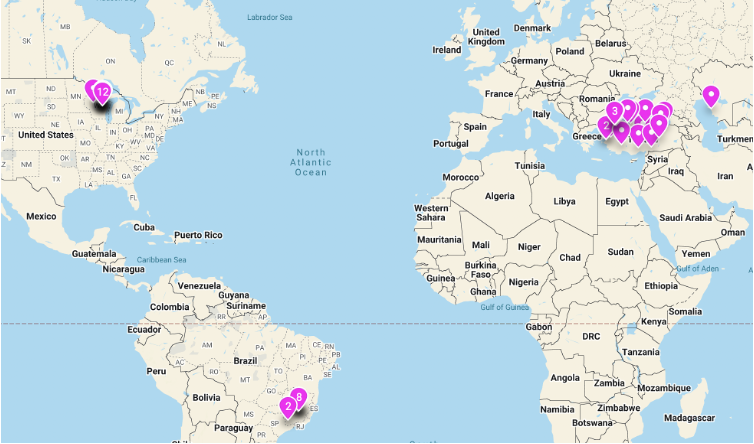
Global Weather and Climate Exchange Project
Tuğba Yıldırım Kumbasar
This semester, we had the Global Weather and Climate Exchange Project, an exciting international collaboration between students from Sabancı University (Turkey), the University of Wisconsin (USA), and Universidade Federal de Ouro Preto (Brazil), which took place from February 24 to April 15. All groups had different academic focuses, yet we brought them together around overlapping objectives. The project was designed to foster intercultural understanding and meaningful academic exchange among students, while exploring the intersection of physical geography, human impact on climate, and broader environmental systems, which are core themes in the Physical Geography course at the University of Wisconsin. Beyond the academic aspects, the project also provided opportunities for language practice, cultural exchange, and interdisciplinary learning. Students from Sabancı University and UFOP brought in diverse local perspectives, helping to broaden the scope of understanding and encouraging UW students to view global climate issues through a more integrated lens.

The project brought together a diverse group of participants: 11 Route 3 students, 8 Route 4 students, and 3 Route 4 Intensive students from Sabancı University; 19 students from the University of Wisconsin enrolled in Physical Geography 1: Weather and Climate; and 10 students from UFOP taking the Academic Genres course during the Spring Semester of 2025. The structure of the project blended individual work, pair tasks, and group discussions, all taking place in a virtual environment that allowed students from the three countries to interact meaningfully.
In total, students completed four tasks and participated in three video chats, alongside written interactions as desired. To begin, students introduced themselves through written posts on a shared online platform, facilitating initial engagement and fostering familiarity. This was followed by a creative assignment in which students recorded and shared short videos showcasing themselves and their immediate surroundings, offering a snapshot of the weather in their local area during that specific week. These early exchanges set the stage for more interactive communication, culminating in small group video chats where students from all three universities came together to discuss local weather patterns and their personal experiences with climate in their respective regions.
As the project progressed, students became more deeply engaged by researching and summarizing local climate-related news and practices. These summaries were shared on the platform and served as the foundation for further written discussions. Additionally, students were offered an optional video chat opportunity to delve deeper into these topics with different peers. The final stage of the project involved a final round of small group video discussions, during which students returned to their original groups to discuss the climate news they had posted, reflect on the overall experience, and bring their conversations to a meaningful conclusion. Following these discussions, students completed a guided reflection, addressing questions about their collaboration, task completion, and the support they received, encouraging them to critically reflect on their learning and engagement throughout the project.
What made this experience particularly rewarding was how it demonstrated the power of student-centered learning, with the instructor’s support and guidance provided throughout. While students received initial direction through brief meetings and were given detailed task guidelines, they were largely responsible for managing their own progress and interactions. To ensure continuous engagement and accountability, reminders and timely support were offered whenever questions or issues arose, allowing students to stay on track. As the instructor, I have facilitated many such projects before, usually limiting participation to around 10 students to ensure deeper engagement. In past experiences, a few students typically withdrew by the second week once they realized the level of commitment required beyond regular class hours. This time, however, was different. Due to high interest, 24 students who signed up for the project were accepted. Of those, 22 remained actively involved from the first week, and 18 successfully completed all required tasks, receiving certificates of participation by Sabancı University School of Languages.
One consistent aspect across my past experiences was the overwhelmingly positive feedback from students. Participants universally shared enthusiastic reflections on the value of the experience. They particularly appreciated the opportunity to connect with international peers, practice their language skills, and explore weather and climate issues from a truly global perspective. It seems clear that the Global Weather and Climate Exchange Project not only fostered academic growth but also provided students with a meaningful and memorable way to connect beyond geographical boundaries, gaining a deeper understanding of the world and one another.
